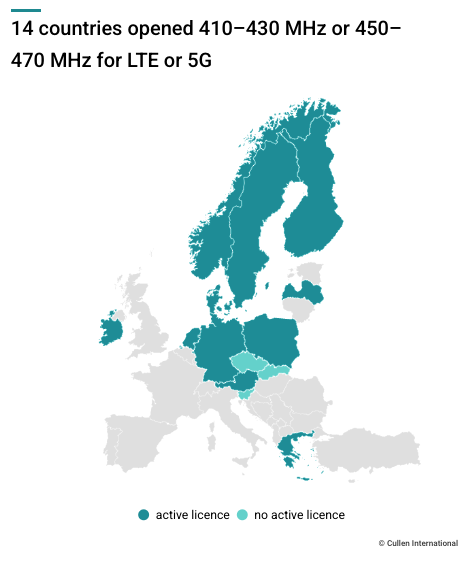Our latest benchmark on the 410–430 MHz and 450–470 MHz bands in Europe shows that 14 European countries opened parts of these bands for commercial LTE or 5G networks. 11 countries have active licences. Another three countries opened parts of the bands for LTE or 5G in their frequency plans but currently have no active licence.
These bands are the lowest frequency bands currently supported by LTE and 5G. The low frequencies allow cheaper network roll-out. Operators need fewer base stations than in higher frequency bands. But with the smaller amount of spectrum available in lower bands, operators cannot offer the same speeds.

In many countries, the licensees are operators from the energy sector, not the national mobile network operators. The networks can be used to connect smart meters or to provide mission-critical connectivity also during electricity blackouts.
For more information and access to the full benchmark, please click on “Access the full content” - or on “Request Access”, in case you are not subscribed to our European Spectrum service.
more news
14 August 25
Fighting online piracy in Brazil
The latest edition of Cullen International's Fighting Online Piracy benchmark shows that Brazil’s audiovisual sector regulator Ancine and its telecoms regulator Anatel have agreed in writing to collaborate in the fight against the online piracy of media content.
11 August 25
Getting tough on TV advertising in LATAM
The new edition of Cullen International’s benchmark on TV advertising restrictions to protect public health or minors notes developments in Argentina and Brazil.
05 August 25
Protection of minors: national initiatives on banning access to social media in Europe
Cullen International has just published a new benchmark on national initiatives on banning access to social media in Europe to protect minors.